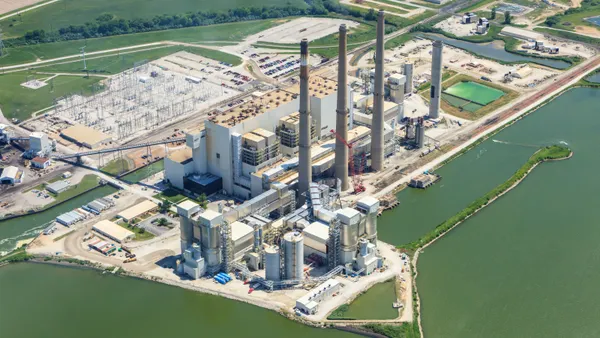Dive Brief:
- The Clean Power Alliance (CPA), a community choice aggregator in Southern California, issued solicitations for 15-year contracts for renewable energy and storage on Tuesday, in an effort to exceed state goals for emissions reductions.
- As the fifth largest load serving entity in California, CPA serves counties and cities that prioritize the development of renewable resources while facing land constraints. The request for offers (RFO) is targeting front-of-meter generation for now, but will launch a pilot next year to begin using distributed resources, according to Executive Director Ted Bardacke.
- In 2018, CPA's RFOs sought between 1 GWh and 2 GWh of renewable energy products and storage, but local resources were not able to compete based on the requirements. The new requests created a separate track for smaller, front-of-meter distributed projects (between 500 kW and 10 MW) in Los Angeles and Ventura counties.
Dive Insight:
The RFO came the same week as California regulators urged load-serving entities in the state to add 4 GW of capacity in the next three years, due to concerns with a potential shortage starting in 2021.
"We do have a preference for projects that have an earlier online date ... 2020 to 2021," Natasha Keefer, director of CPA's power planning and procurement, told Utility Dive.
CPA seeks to add utility-scale resources (10-400 MW) that will be in commercial operation no later than 2023 along with distributed generation or storage-plus-generation no later than 2024.
"Our target in this clean energy RFO is to get between 1,000 and 2,000 MWh of renewable production in contracts emerging from RFOs ... and we think it's achievable" based on the bids received in 2018, Bardacke told Utility Dive.
A number of community choice aggregators are looking to local energy sources, but that has proven difficult in congested metropolitan areas where space is very expensive, such as Los Angeles County.
"That was one of the big lessons learned in 2018," Bardacke said. "We had a very robust response in general... but not enough" local projects rose to the top for a variety of reasons, such as their price and the environmental stewardship factors.
This year, CPA designed distributed energy directly into the RFO with its separate track. CPA also thinks of standalone storage as distributed resources, as storage systems can be aggregated.
On Oct. 11, CPA also launched a reliability-focused RFO, seeking standalone storage resources. The RFO seeks 10 MW to 100 MW of installed storage capacity with a 4-hour duration system in operation no later than August 1, 2023. Bids that would bring projects into operation on or before August 1, 2021 will be expedited. CPA will compare energy capacity, environmental benefits, resource adequacy and ancillary services among the bids.
Once the reliability (standalone-storage) RFO and the clean energy RFO are wrapped up in the spring and summer of 2020, CPA "will start to look at how we can achieve [our] objectives with behind-the-meter resources," Bardacke said.
"Right now we're still in the process of exploring how that aggregation works and how we can leverage those resources to optimize procurement on behalf of our customers," he said.
CPA is also launching a pilot in January targeting about 600 customers who have solar and storage, to bid that aggregated capacity into the California ISO.
"If that is successful and we can actually derive the revenue by bidding into the markets that everybody claims is out there to be derived, then you're gonna feel much more comfortable getting aggressive on the [distributed energy resources] aggregation space ... for more than just resource adequacy and load shifting," he said.
Bids for the storage RFO are due Nov. 11 and for the utility-scale and distributed-scale RFO on Nov. 22. Contracts are expected to be awarded by May 2020 and June 2020, respectively.














